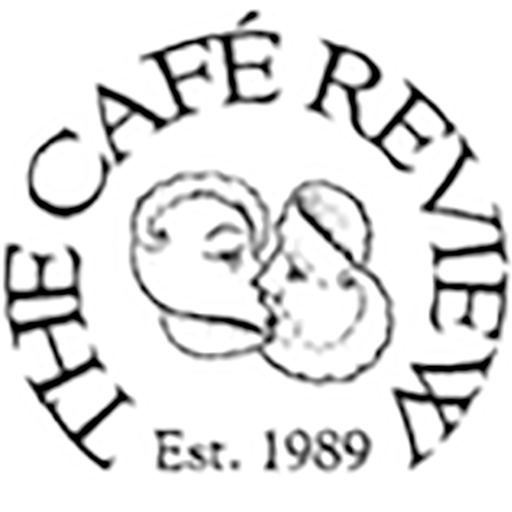In The Human Zoo
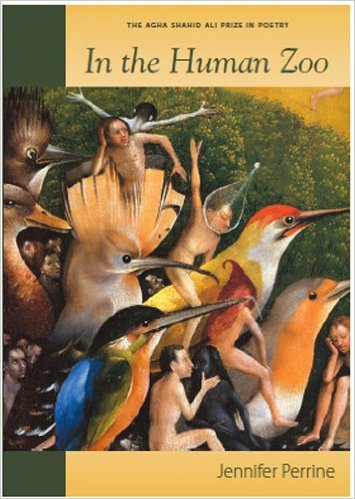
 by Jennifer Perrine,
by Jennifer Perrine,
University of Utah Press, 2011,
88 pages, paper, $12.95,
ISBN: 978-1607811442
Buy the Book
note regarding the following review: In the Human Zoo won the Agha Shahid Ali Poetry Prize sponsored by the University of Utah Press; Zoo in 2010 and Rodeo in 2009.
How long has it been since you’ve felt sucker punched? I’m talking about having to put In The Human Zoo down after a first read, weighting it under a rock on my desk, and going out onto my porch to see if the stars were still where I last saw them. They were there, but my heart was still slamming about in my chest. On first impression, these skillfully crafted poems click shut at their ending like jewel boxes full of wasps. Even afterward, one swears they are waiting for the next innocent victim.
There is little in any of these poems that is not fraught with danger, whether speaking of human origins, the light of fireflies “waiting to scoot their lemony asses / right up to my skin,” “crows unfolding a possum’s / skin,” or how to deal with lemons: “cut your teeth on the rinds. . . ..” Each poem presents another path through ordinary days filled with edges, stingers, “pain wedged on the salty rim / of your face.” Hence the rock. Though we live in a dangerous world, it is rare that we are reminded in such an elegantly brutal way.
Jennifer Perrine might also be a verbal alchemist, given the way she has me reaching for my OED. Her language is by turns common and esoteric, scientific, and surgical. This is language used for its original purpose, to edge words as close to the bone of truth as possible. Having read a lot of poets who seem to want to impress with weighty vocabulary, I was relieved to feel included in digging through the word bins. Once I researched fritillus, spathe and spadix, spirulina, and mammatus, I found she was precise in their use and conscious of their music as well. Her lines are compelling. My limited vocabulary has been expanded by her invitation.
These are not poems of despair. They are survival lines. Perhaps the only way to help you understand is to give you a sample from “Walking Home After the Graveyard Shift”:
. . . I grow talons of housekeys
that slash the August air, that sad frotteur
that pushes against my shirt. Its little huffs
of damp wood and mud pour a fluvial
soup between my breasts. Behind me the owl
whistles its come – on, and I snap my legs
open and shut, a switchblade in the dark.
These are poems that will keep you alive — not necessarily comfortable, but able to fight or flee as you must.
— Michael Macklin
Tocqueville
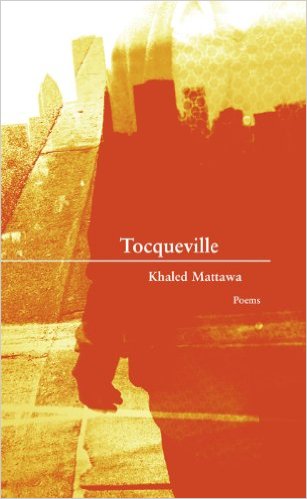
 by Khaled Mattawa,
by Khaled Mattawa,
New Issues, 2010,
paper, 71 pages,
ISBN: 978-1-930974-90-6
Buy the Book
It is with not a little irony that Khaled Mattawa, the Libyan-born American poet, titles this volume after the famous French observer of 19th century America. In this sweeping, often cynical, sometimes daunting collection, the culture at hand is a modern one, one in which American influence has gone global and viral in matters political, economic, and military. At once condemnation and lyric, both worldly and intimate, Tocqueville takes on this global order, its horrors, and the problem of how to at once inhabit, observe, and tell of any of it.
Early in the collection, in “On the Difficulty of Documentation,” Mattawa addresses an enduring quandary: making art of others’ torment. The poem describes beautiful photos of Palestinian refugees, in which, the speaker rhapsodizes, light-bathed village women “carry the moon on their heads.” But then, he writes,
I recall: Such people have no time for beauty.
I recall: Beauty is one of the great conversation stoppers of all times.
Punctuated with gleanings from Bertolt Brecht (“what beauty does is almost a crime”) and the 16th century poet Thomas Wyatt (“But why do / they flee from me / these beauties / that sometime did me seek”), Mattawa worries here and elsewhere over this beauty, and over the implications of lyricizing what one observes.
Of course, observation has myriad modes and products — photography and therapy, film and foreign policy — and accordingly, Mattawa charges this volume with audaciously varied forms, styles, and allusions. The title poem alone, twenty-seven pages long, reels back and forth between a dozen or more different voices: There are first person narratives of wartime atrocities (a man recalls being forced to place his baby in a cassava-mashing mortar and bludgeon it). There are letter excerpts that muse on the role of the classics in the face of wealth disparity and poisoned water sources (“You only have to see the present to realize how false the past can be”). At one point, Edward Said weighs in on the hypocrisy of Tocqueville, who famously criticized treatment of Native Americans and black slaves, when it came for him to address France’s actions in Algeria. There are dialogues between therapist and patient, and between two anonymous operatives whose conversations are sometimes ominous, sometimes positively vaudevillian (their routine on Condoleezza Rice’s “Electra complex” particularly deserves a rimshot).
Some sections are almost inscrutably fragmented, but cumulatively the volume does conjure a dizzying, absurd, often nightmarish landscape of global capitalism and militarism, much in the style of cinematic montage. Indeed, Mattawa freely employs film script directions, too, and even that most dreaded modern weapon of associative assault, the Power Point sequence. The form plays out ad absurdum in “Power Point III,” in which are embedded a series of matrices. These charts describe four unnamed figures, or “Cases,” each of which is presumably somehow emblematic of the modern era. In the squares of each matrix, the Cases are variously described by way of cryptic, sometimes grave, often snarkily funny crossword puzzle-esque clues. This all may at first be off-putting to the formalist, but the Cases can also be increasingly addictive to compare and riddle out (no one likes a spoiler, so suffice it to say that they include a Russian politician and a former U.S. President, and Case #1 is so obviously Anna Nicole Smith that I’m really not spoiling that much). Across one matrix’s row, labeled “Synthesis,” the text spills freely through all the Cases’ columns, an interesting attempt to “synthesize” these four odd representatives of modern culture into one archetype.
If such exercises sometimes feel a little glib, intellectual, and/or outrageous, it’s equally clear that beneath the cynicism and outrage of Mattawa’s poems lies a deep, searching compassion for dealing with this problematic culture. Take “Trees,” which appears late in the volume. This poem limns trees lost and found — a maple, a eucalyptus in a long-unseen homeland, invasive buckthorns, trees once seen bearing bodies — as invested with memory, hurt, and multiple narratives. How we live with them, the poem suggests, is how we live with history, itself a living thing, and how we tell of them remains a puzzle:
Should I name them to their stories —
tree that hides the stop sign in summer,
tree where I once shot a bird,
tree I planted to cast a shadow on her grave?
“Yes,” Mattawa writes elsewhere, “the need for lyric persists.”
— Megan Grumbling
Tiny Sabbath
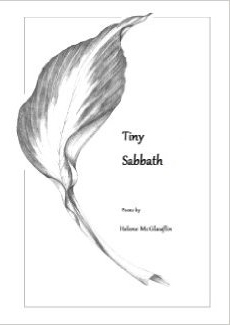
 by Helene McGlauflin,
by Helene McGlauflin,
Finishing Line Press, 2010,
27 pages, paper, $12.00,
ISBN: 1-59924-675-9 / ISBN: 978-1-59924-675-8
Buy the Book
The word-music in Tiny Sabbath hums like a tuning fork; the vibe’s pitched low, nudging McGlauflin’s subjects center stage, where they play on a Mozartian scale. My first impression, however, recalled the words of a rock music critic, who was comparing my beloved BeeGees to the Everly Brothers: He asserted that both groups produced “harmonies so close they could only be produced by siblings.”
I say this because on the back of Tiny Sabbath, there’s an extensive blurb from the poet’s sister, Marita O’Neill — an esteemed friend and colleague — author of Love Dogs and Evidence of Light. While this close a blood-bond could produce a skewed assessment, Marita ably plucks the major chords. Her blurb begins by quoting Emerson: “Here we find ourselves suddenly . . . in a holy place.”
It’s apropos. An unabashed fervor ends McGlauflin’s “To the Medieval Christian Mystics,” the final couplet echoing Marita’s fusion of the historical and the mystical: “May I offer you a damp cloth for your face, a cold drink for your thirst, / and sit by you a while silently in the sun?” At times, not wholly consoled by the devout “vocal colors” of, say, a Pavarotti singing “Ave Maria,” McGlauflin displays a dissonant relationship with Catholicism, in poems infused with telling colors or the absence thereof. In “White Carnation Club,” she revisits a Mother’s Day rite in which, after Mass, pink blooms were sold to those with living mothers, while those with deceased matrons were obliged to choose white:
I was forty when my turn came to lift a white
carnation from the basket, join the club. Standing in
the inevitable rain at her grave I was unaware of my
status until my bubble of self-absorption popped,
and I turned to see that cluster of black umbrellas. . . .
As mother, teacher, yoga instructor, and counselor, she intuits that the jangling chaos of Today will — someday — make us all yearn for the “snows of yesteryear” (to translate the French bard Villon). The poem “Sirens” exemplifies McGlauflin’s wisdom; she acknowledges the angst one experiences, applying mindfulness to past and present:
In my girlhood
we stopped everything for prayer
when we heard sirens. Our sister
would put down her chalk, wipe dust
from her delicate hands and begin:
in the name of the father, son, spirit
we pray for the care of the afflicted.
Who were they? Where did sirens go?
Note the “accuracy” of the metaphor in this snippet from stanza two:
. . . Now empty of prayer
I still stop to wonder where sirens go
what hand gave the roulette wheel a spin
what chance allowed my marble to fall
in a winning slot at this moment
allowing me to stand whole beneath
a clear September sky.
Quoting half this poem demonstrates its effective, breathless enjambment: For when I hear “clear September sky,” and (later) “tomorrow may be my day to lose,” I immediately flash back to 9/11: the cloudless sky smudged — far-away — by high-jacked jets deployed as missiles.
We “rural” Mainers can give thanks we’re not the bulls -eye of
al – Qaeda (remember? — two terrorists flew from Portland early that day!), yet her apt roulette metaphor reminds us that all our prayers can NOT eliminate Chance, whether it’s (in the words of Bush Junior), “for us, or against us.”
McGlauflin’s credo, expressed in her second poem “Companion,” is alone reason enough to buy this book. Here are the final lines,
a consolation to those who answer — sometimes reluctantly — to the persistent demands of the Muse:
. . . Oh, there are days
you may want to run away, hide in some dark quiet place,
but she will call for you, search for you, find you, hold you.
— Peter Manuel
Nox
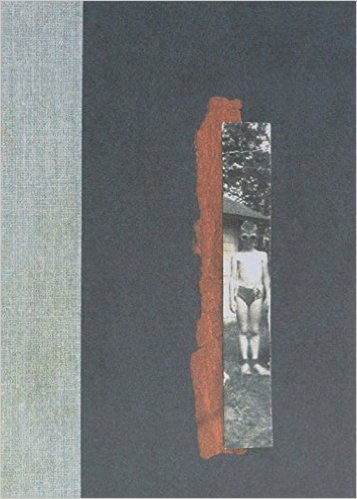
 by Anne Carson,
by Anne Carson,
New Directions, 2010,
illustrated, unpaged, $29.95,
ISBN: 978-0-8112-1870-2
Buy the Book
Anne Carson’s beautiful book in a box has already been excellently reviewed in The New Yorker, The New York Times, The Guardian, The Believer, and the list goes on.
And so, despite my excitement at the prospect of writing this review, Nox’s two -inch thick bulk sat on my book pile, and continued to sit.
I read it three times, loved it, and it still sat. What could I say that hasn’t already been said, and said much better than I could say? I took it with me to my parents’ house for Thanksgiving. My mother, seeing the cover image of Carson’s brother Michael as a ten-year-old boy in swim trunks, flippers and goggles, told me the picture looked exactly like my Uncle Carl. And so she wanted to read the book, but because of turkey distractions, she did not get around to it. I offered to leave the book with her, but she objected: “You’re the one who has to write the review. Won’t you need the book?”
In my mother’s comment about the cover image is a place to start. The book is essentially an elegy to Carson’s brother Michael, who died in 2000 in Copenhagen. It was, in Carson’s words, “a surprise to me.” Carson’s brother did in fact resemble a ten-year-old version of my uncle, but I have the distinct feeling that many people will recognize this goggled sliver of a boy as one of their own. He has that amorphous quality that radiates from the black-and-white photo, calling out, “I’m cute, and I’m prickly. I don’t want you to love me, but you won’t be able to help yourself, will you?”
Of course not. Such is the energy of the distant and the departed.
Who is this boy? And why am I compelled to like him?
Thus begins the asking. But the asking is not idle, as Carson says. To ask is an action, a moving forward in time until answer. As a child, I asked my mother so many questions — why are there tummies? why door panels? why church Latin? why armies? why flight? — that at times, when the onslaught of questions threatened to overwhelm my good mother, she’d respond, “Why is a cow?” Why indeed. I never knew the answer to this question. It often made me mad. How should I know? It made me ask more questions.
I love the old questions, Carson says. Why go on? Why language? What is a voice? Why is a cow?
This asking is something we carry with us, fashioning it into a thing that carries itself.
An accordion book in a box. A hollow book, and not so easy to carry.
My aunt, when I was a child, had a wall of bookshelves, hundreds of volumes. One of my brother’s and my favorite games with friends was to find the hollow book somewhere in the vast bookshelves that contained not words, but jewels — my aunt’s rings she had kept from her own grandmother’s treasures. My aunt didn’t particularly enjoy this game, but we couldn’t resist searching.
The searching has wings. And as we read Carson’s book, we become aware of all the questions of History, a phoenix, flying above us as we read.
A shadow crosses the page, wings, and in this passing shade we come to see the immensity of the mechanism in which we are caught, the incredible fragility of our own flight of shadows, and we are able to fly because of the motor of our asking. The asking makes our bones hollow.
“The immensity of the mechanism in which we are caught.” Such a beautiful phrase, and Carson uses so many others. I would mention the page number, but there aren’t any. What is this mechanism that catches us?
By far the strangest thing that humans do is history. Herodotus is firm on this, as Carson asserts.
The sad anthropologist was not wrong in saying that history allows the enslavement of humankind. A voluntary enslavement, much more pervasive than television or wireless hand-held devices. “What else can he do?” What else can we do? We, literally, asked for it. Like Herodotus, and Carson, we thus describe and are intoxicated by our efforts.
But this act of history is not grand; we collect “bits of muteness.” From whom? From those who have died? From Carson’s brother Michael, from Herodotus, from my aunt and yours and the others.
Muteness, according to Carson, possesses “a fundamental opacity” that sounds of loss; and the essence of loss is the asking. But, of course, there is no sound to the asking. This book does not speak.
To put it another way, there is something tangible in a lack.
And now we approach the end without really having begun. Dictionary entries of the Greek words in Catullus’ poem 101 on the death of his brother punctuate Nox at regular intervals, giving the illusion of knowledge, the solidity of the parts of speech. They almost function as answers to the asking. But they are only a given structure, empty even in their attractive form, because there is no meaning in suffering. One cannot define it. There is no answer. Carson calls it night, or in Latin, “nox.” On the final page, Catullus’ poem, even if one could read Greek, is blurred beyond recognition, set atop night paper.
Because it is so big and unwieldy, my copy of Nox has taken a beating, corners bent, cardboard ripped like a too -big heart, a too-big book in a small, paperback world. Where does this book fit? On my bookshelf? My apartment doesn’t have enough bookshelves, so we have many little stacks and piles of spillover books. Nox has sat on the top of the one closest to my writing desk for weeks. When I come into the room, it calls to me from its little hill that holds open the glass doors from the kitchen. I’ve been ignoring its call for so long — I don’t do reviews, too chalky — but now I have to start.
I can faintly hear the asking that Carson’s book provokes, questions from my own childhood as a ten-year- old, goggled boy, as well as arcs from the asking of later life, the heavier stuff, some realms I’ve lost, and vaster.
Why did Eric Brokaw die in that car crash? Why did Ralph Walker shoot himself at the old basketball courts?
I have begun to listen to them more closely, and to try to ask questions in return. What else can I do? The muteness has grown too loud to ignore.
— Jefferson Navicky

